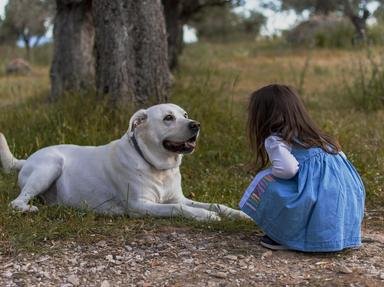Quiz Answer Key and Fun Facts
1. This large herbivore is recognisable for its leathery skin and the horns on its face, which make it a popular target for poachers, as some people believe the horns have magical properties. It mainly lives in Africa and Asia, and can be black or white. Which animal is this?
2. This lizard is often green, but can change the colour of its skin. It has a long tongue and big round eyes on the sides of its head, and lives in Africa, Asia and southern Europe. Some people keep it as a pet. Which animal is this?
3. This African herbivorous animal is one of the most memorable-looking animals due to its very long neck. It has little horns on its head and patchy skin, and it appears in a Roald Dahl book. Which animal is this?
4. This bird is a type of parrot that is very colourful, and lives in South America, Central America and Mexico. The most well-known species of this parrot are scarlet, or blue and yellow. It can be kept as a pet, but can give a nasty bite with its big sharp beak. Which bird is this?
5. This huge reptile may sound like a fantasy character, but it is very much a real animal! It lives on an island in Indonesia, and eats deer and carrion. Which animal is this?
6. This spotted cat is one of the fastest mammals on earth, and lives in Africa and Iran. It kills its prey by chasing them down and biting their necks. It is recognisable by its spotted coat and black lines running down its face. Which animal is this?
7. This ape (not a monkey!) lives in Southeast Asia and has an orangey-brown coat. Many of them have lost their homes because of the demand for palm oil, while their babies have been sold illegally as pets. They are very intelligent and can use tools. Which animal is this?
8. This bird has long legs, a curved beak and bright pink feathers. They live in Central and South America, Asia and Africa, and sometimes even Europe. Some people have plastic ones on their lawns. Which bird is this?
9. This animal looks like a giant guinea pig, and is the world's biggest rodent species. It comes from South America and is hunted by predators, human or otherwise, for its meat. Some people keep them as pets. Which animal is this?
10. This huge, non-venomous snake is one of the longest and heaviest snakes in the world. Some people keep it as a pet, while others hunt it for its skin or to be used in traditional medicine. Its skin has a distinctive pattern that resembles a net. Which animal is this?
Source: Author
Kankurette
This quiz was reviewed by FunTrivia editor
looney_tunes before going online.
Any errors found in FunTrivia content are routinely corrected through our feedback system.
